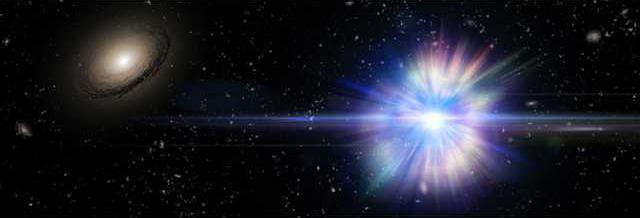BERKELEY, Calif. Three stars were far from their home galaxies when they exploded, astronomers say.
Millions or billions of years before they went supernova, the stars were flung from their home galaxies, according to researchers at the University of California, Berkeley. Stars typically go supernova inside large galaxies, but these three stars were in so-called empty space at the time of their explosions.
Such rare solitary supernovae provide an important clue to what exists in the vast empty spaces between galaxies, and can help astronomers understand how galaxy clusters formed and evolved throughout the history of the universe, a statement from the university reads.
Astronomers used images from the Hubble Space Telescope to confirm the finding. The stars were first identified in 2008 and 2010, but at the time researchers were unable to rule out the possibility that they were being hosted by a faint galaxy. Hubbles clearer pictures eliminated that doubt, according to the study.
The closest neighbor to the three supernovae was about 300 light-years away, astronomers estimated. They noted the distance is 100 times farther than our suns closest neighbor, Proxima Centauri.
If there were any planets or other objects near the stars, they would have been obliterated by the explosions, according to researchers.
The findings were presented Friday at a conference at North Carolina State University. The study was also published in The Astrophysical Journal.
Millions or billions of years before they went supernova, the stars were flung from their home galaxies, according to researchers at the University of California, Berkeley. Stars typically go supernova inside large galaxies, but these three stars were in so-called empty space at the time of their explosions.
Such rare solitary supernovae provide an important clue to what exists in the vast empty spaces between galaxies, and can help astronomers understand how galaxy clusters formed and evolved throughout the history of the universe, a statement from the university reads.
Astronomers used images from the Hubble Space Telescope to confirm the finding. The stars were first identified in 2008 and 2010, but at the time researchers were unable to rule out the possibility that they were being hosted by a faint galaxy. Hubbles clearer pictures eliminated that doubt, according to the study.
The closest neighbor to the three supernovae was about 300 light-years away, astronomers estimated. They noted the distance is 100 times farther than our suns closest neighbor, Proxima Centauri.
If there were any planets or other objects near the stars, they would have been obliterated by the explosions, according to researchers.
The findings were presented Friday at a conference at North Carolina State University. The study was also published in The Astrophysical Journal.








